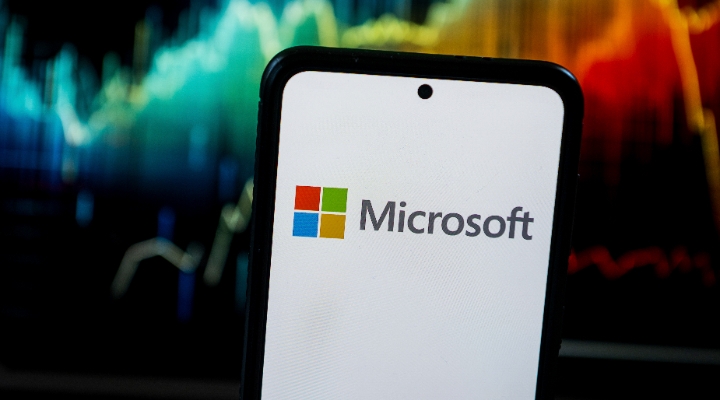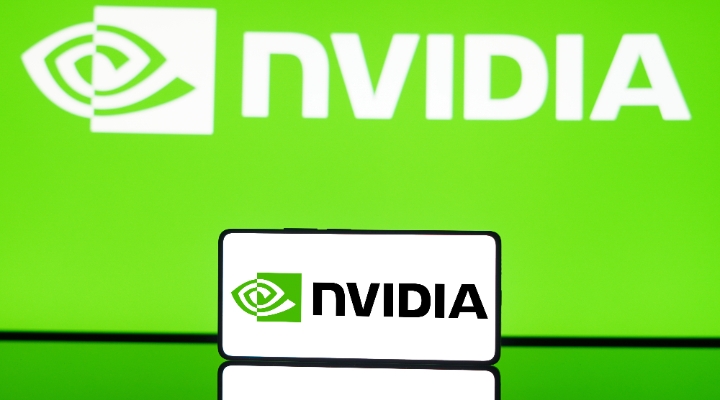Earnings Release Date
July 30, after the close of trading
What to Watch for in Microsoft's Q2 Earnings
Azure grew 31% year over year versus guidance of 28% in the third quarter. Artificial intelligence contributed 7 percentage points of that growth. Both large deals and the number of deals were strong. Management commented that it left some revenue on the table because it didn't have enough AI capacity. So the company will invest heavily next – we estimate $15 billion-$20 billion in capital expenditures, bringing the year total to as high as $50 billion. Chief financial officer Amy Hood said it would step up next year too.
Progress on Activision Blizzard integration. Reports suggest Microsoft is going to raise prices for Game Pass.
Commercial bookings and remaining performance obligation growth.
General demand trends. Microsoft reports early in the cycle, helping to set the tone for software overall. Results from last quarter were generally solid, with strength in large deals, good bookings, and solid RPO growth.
Fair Value Estimate for Microsoft
With its 3-star rating, we believe Microsoft's stock is fairly valued compared with our long-term fair value estimate of $435 per share, which implies a fiscal 2024 enterprise value/sales multiple of 12 times and an adjusted price/earnings multiple of 37 times.
We model a five-year compound annual growth rate for revenue of approximately 13% inclusive of the Activision acquisition. However, we believe macro and currency factors will pressure revenue in the near term. We believe revenue growth will be driven by Azure, Office 365, Dynamics 365, LinkedIn, and emerging AI adoption. In our view, Azure is the single most critical revenue driver over the next 10 years as hybrid environments (where Microsoft excels) drive mass cloud adoption. We believe the combination of Azure, DBMS, Dynamics 365, and Office 365 will drive above-market growth as chief information officers continue to consolidate vendors. We believe More Personal Computing will grow modestly above GDP over the next 10 years.
Read more about Microsoft's fair value estimate
Key Morningstar Metrics for Microsoft
• Fair Value Estimate: $435.00;
• Morningstar Rating: ★★★;
• Morningstar Economic Moat Rating: Wide;
• Morningstar Uncertainty Rating: Medium.
Economic Moat Rating
We assign Microsoft overall a wide moat primarily due to switching costs, with network effects and cost advantages as secondary sources. We believe Microsoft's moat will allow the company to earn returns above its cost of capital over the next 20 years.
We rate Microsoft's productivity and business processes segment as having a wide moat based on switching costs and network effects. PBP, representing approximately 30%-35% of total revenue, consists of Office 365, Dynamics 365, and LinkedIn.
Microsoft's intelligent cloud segment includes Azure, OpenAI, Nuance, GitHub, Visual Studio, Microsoft Intelligent Data Platform, Microsoft Fabric, and Windows Server, SQL Data Base Management System. We assign the segment a wide moat based on high switching costs, network effects, and cost advantages. IC represents approximately 40%-45% of total company revenue, with Azure representing 25%-30% of total company revenue, or two-thirds of the segment.
Read more about Microsoft's moat rating
Financial Strength
We believe Microsoft enjoys excellent financial strength, arising from its strong balance sheet, growing revenue, and high and expanding margins. As of June 2023, Microsoft had $111 billion in cash and equivalents, offset by $47 billion in debt, resulting in a net cash position of $64 billion. Gross leverage is at 0.5 times fiscal 2023 EBITDA. Our base case assumes that revenue grows at a healthy pace, driven by Azure public cloud adoption, Office 365 upselling efforts, AI adoption, and broader digital transformation initiatives. We see strong margins improving further over the next several years. Free cash flow margin has averaged 31% over the last three years, which we expect to improve.
Read more about Microsoft's financial strength
Risk and Uncertainty
Microsoft's risks vary among its products and segments. High market share in the client server architecture over the last 30 years means significant high-margin revenue is at risk, particularly in OS, Office, and Server. Microsoft has been successful at growing revenues in a constantly evolving technology landscape, and it's successfully moving existing workloads to the cloud for current customers and attracting new clients directly to Azure. However, it must continue to drive revenue growth of cloud-based products faster than revenue declines in on-premises products.
Microsoft is acquisitive, and while many small acquisitions are completed that fly under the radar, the company has had several high-profile flops, including Nokia and aQuantive. The LinkedIn acquisition was expensive but served a purpose and seems to be working out well in our view. It is not clear how much Microsoft bought in the Permira-led Informatica LBO, and it may have been an important strategic investment, but Informatica was certainly not a growth catalyst. GitHub was expensive but strategic and seems to be shaping up as a success, while the ZeniMax deal should boost the company’s first-party video game publishing efforts. While Nuance was not hard to digest, the $69 billion Activision deal was completed in October 2023 and will likely be a bit more involved.
Read more about Microsoft's risk and uncertainty
MSFT Bulls Say
Public cloud is widely considered the future of enterprise computing, and Azure is a leading service that benefits the evolution first to hybrid environments and ultimately to public cloud environments.
Microsoft 365 continues to benefit from upselling into higher-priced stock-keeping units, which should continue over the next several years.
Microsoft has monopoly-like positions in areas (OS, Office) that serve as cash cows to help drive Azure growth.
MSFT Bears Say
Momentum is slowing in the ongoing shift to subscriptions, particularly in Office, which is generally considered a mature product.
Microsoft lacks a meaningful mobile presence.
Microsoft is not the top player in its key sources of growth, notably Azure and Dynamics.






























